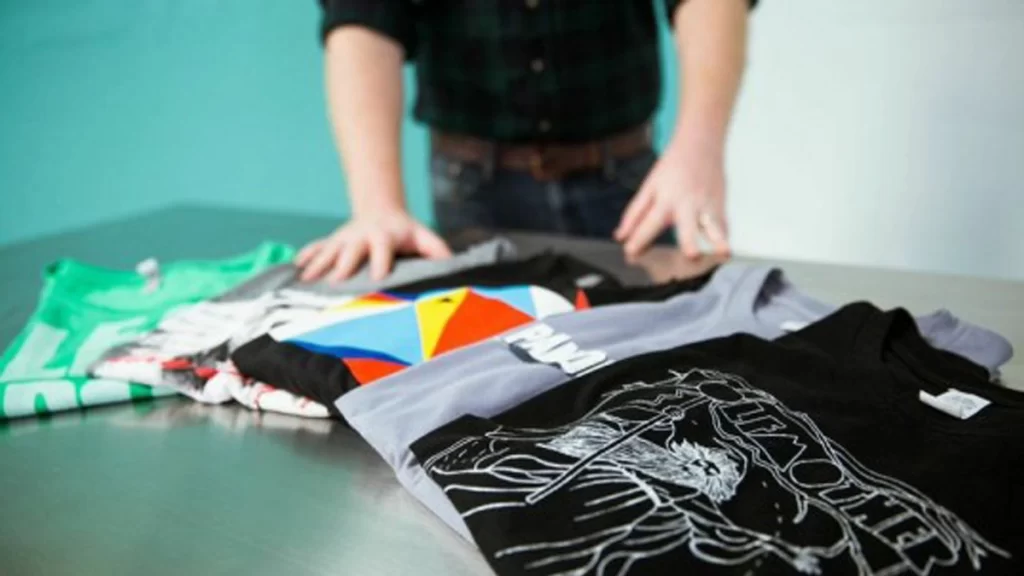How to Store DTF Transfers [Tips and Practices 2025]
DTF (direct-to-film) transfers are a popular method to print garments and accessories using a DTF printer. Just like any good piece of art, proper storage is essential to ensure your transfers maintain their pristine quality and are ready to shine when you need them.
Even the most beautiful transfer can fall flat if not stored properly. But how to store DTF transfers? Fear not, creative minds! This blog post will equip you with the best practices and tips to store DTF transfers like a pro.
Table of Contents
How to Store DTF Transfers?
A true DTF printer expert knows the art of DTF transfers not only in pressing them but also in how to store DTF transfers. Once you know the DTF storage basics, your DTF transfers can go a long way. It doesn’t require a huge investment but a bit of precaution to follow some practices and essentials.
- Airtight Containers- Store transfers in sealed plastic bags or vacuum-sealed pouches to prevent exposure to moisture, dust, and contaminants. Make sure the packaging is airtight to preserve the pristine quality of transfers.
- Reusable Bags- If you find airtight containers out of budget, Ziploc bags are the best alternative. These are not only reusable and available in various sizes but also an excellent method to store different transfers cheaply. The main thing is to blow air out as much as you can before sealing to prevent moisture accumulation.
- Silica Gel Packets- These moisture absorbers are your best friends! They soak up extra moisture like a sponge. Place a few packets inside your storage container to keep the humidity level low. This method mostly protects from weather changes when you have to ship transfers.
- Parchment Paper- To prevent transfers from sticking together (especially if you’re storing for more than a month), place sheets of acid-free paper or parchment paper between them. It not only absorbs moisture but also maintains the quality of each transfer.

How Long Do DTF Transfers Can Be Stored?
There’s no one-size-fits-all answer; it mostly depends on how well they are stored. In general, I recommend using DTF transfers within 3 to 12 months for best prints.
Under ideal storage conditions, such as in a cool, dry, and dark environment with stable temperature and humidity levels, DTF transfers remain usable for up to a year or longer.
If you can’t maintain proper storage conditions for an extended period, plan to use your DTF transfers within a month to prevent quality loss.
What are the Risk Factors of DTF Storage?
As you’re interested in knowing how to store DTF transfers, you have to be mindful of risk factors that affect their shelf-life. Storage is more than just putting stuff away. With DTF transfers, you have to be careful of the following risk factors:
- Ink Quality- The quality of ink used in DTF transfers impacts their longevity. Higher-quality inks are more durable and resistant to environmental conditions. It is recommended to use opened dtf ink bottles within 3 months and sealed bottles within 12 months.
- Physical Damage- Creasing, folding, or bending the transfers can damage the ink layer and compromise their printability. Rough handling and improper stacking also cause the adhesive to become less effective.
- Moisture and Humidity- The biggest foe! Moisture causes warping, discoloration, and even adhesion issues. High humidity levels above 50% promote mold growth or deterioration of the transfer film.
- Temperature- DTF transfers perform best at optimal DTF printing temperature or slightly below. Like a Zen warrior, find balance. High temperatures disrupt stored transfer processes. In addition, heat can melt the adhesive. One hot summer day sitting in a warehouse can cause the transfers to stick together.
- Sunlight- However, direct sunshine should not reduce the color intensity of the transfer once it is printed but activates glue. It affects the transfers’ aesthetic attraction. Ultraviolet (UV) rays break down the ink, causing colors to fade and lose vibrancy. Over time, light exposure also makes the transfers brittle.
- Dust- When dust and debris stick to the adhesive side of printed transfers, it does not apply to fabric smoothly. To preserve the quality of DTF transfers, store them in air-tight containers.

Pro Tips to Store DTF Transfer for a Longer Period
Now you have a better understanding of how to store DTF transfers, here are some additional pro tips to store them for a longer period:
- Avoid folding or bending transfers. Store them flat on shelves or in protective binders to prevent creasing, warping, or distortion of the film.
- Organize transfers by size, color, or project for easier access.
- Store DTF transfers in a climate-controlled environment with stable temperatures (65°F to 75°F ). Humidity level should be between 50% to 55%.
- Avoid storing transfers near chemicals, strong odors, or heat sources.
- Inspect transfers regularly for signs of damage, such as warping, discoloration, or cracking. Discard any unusable ones.
- Handle transfers with clean gloves to prevent fingerprints or oils from transferring onto the film.
- Stacking large amounts of DTF transfers on each other can cause bottom transfers to stick together, ultimately ruining them. Store them in stacks of 50 to 100 or fewer to reduce risk.

How to Monitor and Maintain DTF Transfers?
Regular monitor the DTF transfers for signs of wear such as sticky problems or color changes to ensure they are still operational.
Be sure to monitor the adhesive problems related to the transfers because they may not stick properly when in use. If stored correctly, DTF transfers should not be warped or change colors. However, due to improper storage, they might develop bad color or poor adhesion to the surface they are applied.
To ensure that your transfers are properly working, it is recommended that you check on them once in a while. This ensures that; there is correct pressure when using the heat press, and the transfers are still good. If you find any issues, you may want to change how you store it to protect it better. Extreme conditions such as very high or very low temperatures or humidity affects the adhesive or damage the transfers.
Conclusion
Proper storage of DTF transfers requires knowledge of DTF printer maintenance. Putting them in airtight containers or reusable bags, and interleaving with parchment or butcher paper can help to maintain their consistent print quality.
By following the pro tips outlined above, you can ensure your DTF transfers are always ready to impress your customers. Remember, proper storage is an investment that pays off in vibrant, long-lasting prints that will make your projects stand out!
